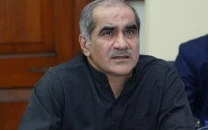Accountability in education
Sufficient attention has not been paid to the technical and vocational education in Pakistan

The writer is a researcher at the Sustainable Development Policy Institute
Accountability can be a virtue, describing the quality of being answerable and reliable. In this report, it is defined as a type of mechanism. On legal, political, social or moral grounds, governments and other education actors are obliged to report on the fulfilment of their responsibilities. As per ‘Accountability in Education 2017-18’ report, Pakistan is among those 33 countries which cannot even meet education financing bench mark.
In Pakistan, the auditor general’s office reported to the Public Accounts Committee of the National Assembly that $7.5 million worth of Basic Education Community Schools programme funding had been illegally diverted. The project director transferred the amount to a private account instead of a prescribed bank. The National Database and Registration Authority also detected more than 2,000 fake teacher employee identity cards and auditors tracked 349 ‘ghost’ schools.
Pakistan has monitored the attendance of more than 210,000 education staff in 26,200 schools using biometrics: fingerprints and photos, coupled with Global Positioning System coordinates. As of February 2017, as many as 40,000 absent teachers and 6,000 absconders (employed but long absent) have been disciplined. In Pakistan, teachers report on daily attendance by text messages. The forum of nine low and middle income countries committed to achieving SDG 4 account for more than half the world’s population. Yet, Bangladesh, China, India, Nigeria and Pakistan do not report on global indicator 4.1.1 at any education level (early primary, end of primary or end of lower secondary). The next in line are textbooks, an important part of the school and higher levels of education. In Pakistan, the textbooks are designed according to the National Curriculum Policy 2006. The policy outlined appropriate learning goals but failed to guide about teaching methodologies and teaching materials which resulted in its failure. Similarly, the content covered in the textbooks is not directly in line with the content scope manifested in the curriculum and also does not cater to the current needs and desirable characteristics. The textbooks have also failed to incorporate the curriculum reforms envisaged in the National Education Policy 2009. For example, it was decided that human rights-related content would be included in the textbooks. But, no success has yet been observed in this regard.
The timely provision of free textbooks is the state’s responsibility. Provincial textbooks boards usually take that responsibility. But they normally get late in providing the textbooks at the start of new academic year. This year, new academic sessions began from the start of April. Not to speak of other regions, students of Islamabad faced many difficulties in getting the new textbooks. Hardly 20 per cent books were available in the markets by the end of April 2016. Punjab’s textbook board also failed to provide the books in time. The books contained mistakes and the binding quality was below standard. The 10th class English book is not having the 7th and 8th chapters in it and many of the middle-level books are missing some pages.
In Pakistan, textbooks have also been criticised for normalising militarism and war and including biases, historical errors and distortions. Prominent Pakistanis other than military heroes and nationalist movement leaders are often excluded. Pakistani textbooks published after a 2006 curriculum reform still emphasised wars with India and largely ignored peace initiatives. They also perpetuated a narrative of conflict and historic grievances between Muslims and Hindus, rather than discussing the potential for conflict-resolution and reconciliation.
Sufficient attention has not been paid to the technical and vocational education in Pakistan. The number of technical and vocational training institutes is not sufficient and many are deprived of infrastructure, teachers and tools for training. The population of a state is one of the main elements of its national power. It can become an asset once it is skilled. Unskilled population means more jobless people in the country, which affects the national development negatively. As more educated farmers are more likely to be more productive, take measures to mitigate climate change effects and adopt new technology. In Pakistan, such farmers are more likely to adopt irrigation pumps powered by alternative energy sources because they can get access to the information and are more aware of the options. Use of the pumps is associated with higher yields, higher household income and lower poverty. Experience shows households that adopted agricultural practices to counter climate change effects were more educated and had better access to weather-related information. Therefore, technical education needs priority handling by the government.
There is a need for implementation of national education policy and vision 2030 education goals. An analysis of education policy suggests that at the policy level there are several admirable ideas, but practically there are some shortcomings also. It may not be possible for the government at the moment to implement a uniform education system in the country, but a uniform curriculum can be introduced in educational institutions of the country. Similarly, an effective monitoring system is needed in education departments.
Published in The Express Tribune, July 13th, 2018.
Like Opinion & Editorial on Facebook, follow @ETOpEd on Twitter to receive all updates on all our daily pieces.


1729685382-0/Untitled-design-(57)1729685382-0-208x130.webp)












COMMENTS
Comments are moderated and generally will be posted if they are on-topic and not abusive.
For more information, please see our Comments FAQ